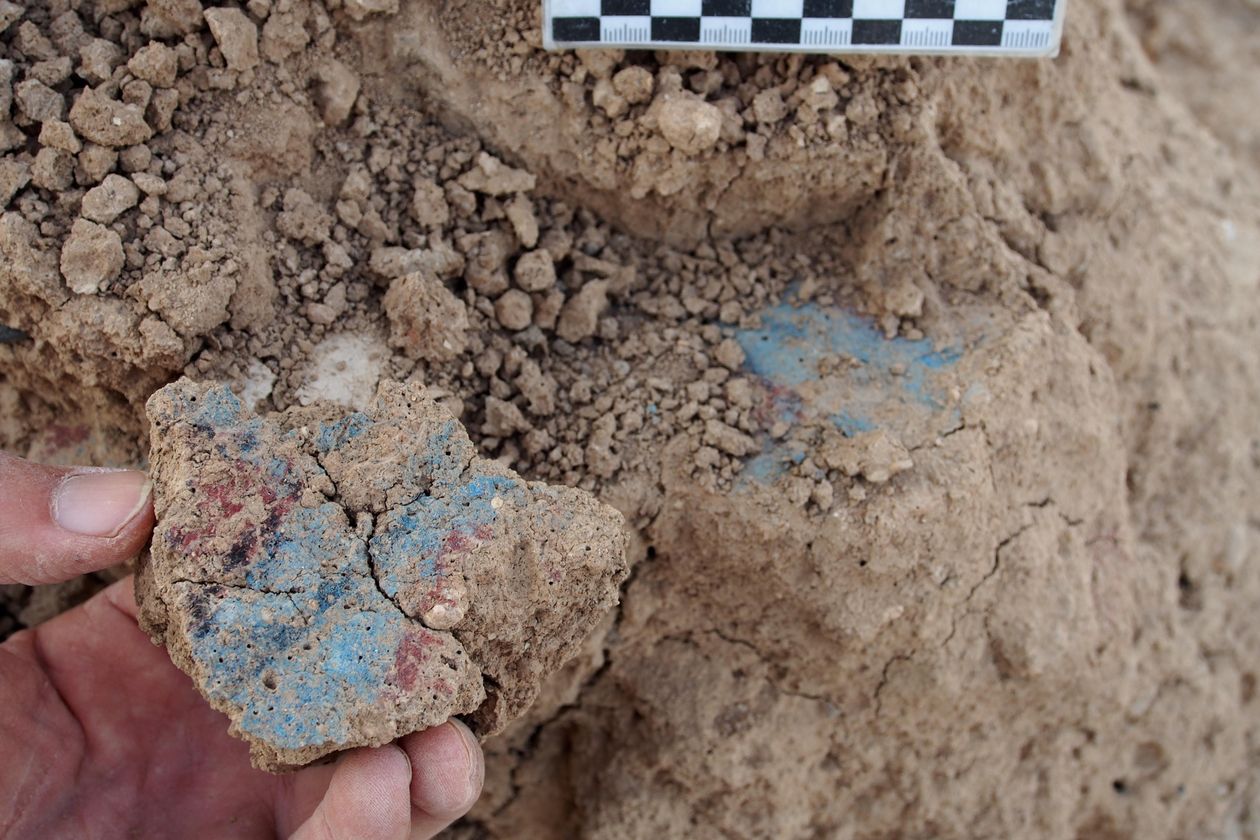As reported by Hannah Jackson of Global News, June 29, 2019 (updated June 30, 2019):
A 3,400-year-old palace has been uncovered in a reservoir in the Kurdistan region of Iraq after a drought caused water levels to drop dramatically.HT: W.H.M.
A Kurdish-German team of archeologists from the University of Tübingen and the Kurdistan Archaeology Organization made the discovery in the Mosul Dam reservoir, on the banks of the Tigris River.
According to a press release, the Kemune Palace can be dated to the time of the Mittani Empire, which dominated large parts of northern Mesopotamia and Syria from the 15th to the 14th century BC.
“The find is one of the most important archeological discoveries in the region in recent decades and illustrates the success of the Kurdish-German co-operation,” Kurdish archeologist Hasan Ahmed Qasim said in a press release.
The site was first discovered in 2010 when the water level in the reservoir was low, however this is the first time the team has been able to excavate.
The area was flooded after the Mosul Dam was constructed in the mid-1980s, but a lack of rain and water in southern Iraq caused the water level to drop during the summer and autumn of last year.
Ivana Puljiz from the Tübingen Institute for Ancient Near Eastern Studies (IANES) said the site shows a carefully designed building with massive interior mud-brick walls, some up to two metres thick.
Some of the walls are more than two metres high and some are made of plaster, Puljiz said.
“We have also found remains of wall paintings in bright shades of red and blue,” Puljiz said in a press release. “In the second millennium BCE, murals were probably a typical feature of palaces in the Ancient Near East, but we rarely find them preserved.”
“Discovering wall paintings in Kemune is an archeological sensation.”
A mural fragment. (Photo credit: University of Tübingen and Kurdistan Archaeology Organization)
Inside the palace, the team identified a number of rooms and were able to partially excavate eight of them.
The team also discovered 10 clay tablets, which are in the process of being translated.
In ancient times, the palace would have stood on an elevated terrace above the valley, only 20 metres from what was then the eastern bank of the Tigris River.
“In the Mittani period, a monumental terrace wall of mud bricks was built against the palace’s western front to stabilize the sloping terrain,” the press release reads. “Overlooking the Tigris Valley, the palace must have been an impressive sight.”
According to the researchers, the Mittani Empire is one of the least researched kingdoms of the Ancient Near East.
“Information on palaces of the Mittani Period is so far only available from Tell Brak in Syria and from cities of Nuzi and Alalakh, both located on the periphery of the empire,” Puljiz said. “Even the capital of the Mittani Empire has not been identified beyond doubt.”
Archeologists are hoping to obtain information about the politics, economy and history of the empire by studying the tablets discovered in the palace.






































No comments:
Post a Comment